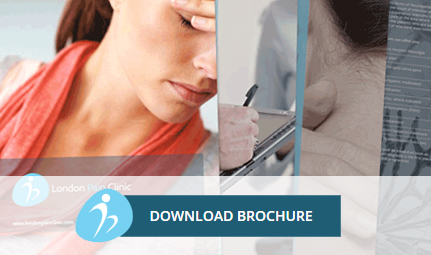Did You Know?
Botox can block nerve signals when it is injected into any muscle? This reduces patients’ pain by temporary relaxing specific muscles and empowering better body function. Here at the London Pain Clinic, as leaders in our field, we are always abreast of the latest cutting-edge research on pain conditions, pain management, and the level of success provided by a broad category of therapies and treatments (including injectables). When it comes to Botox injections for pelvic pain relief, substantial research shows that this state-of-the-art treatment is most definitely worth it. Here are a couple of examples:
“Available studies show that Botox injections significantly reduce pain levels and improve quality of life at 6 months follow-up” [1]
“All observational studies found that botulinum toxin injection was effective in reducing chronic pelvic pain with the greatest change in visual analog scale from 8.69 at baseline to 3.07 at 24 months post-injection” [2]
Defining Pelvic Pain
As your Pain Doctor will explain to you, chronic pelvic pain refers to experiencing continual or intermittent pain in the lower abdomen or pelvic region. It can vary in intensity, and can last for six months or more. The pain can be:
- Sharp
- Dull
- Cramping
- Throbbing
- Pressurising
- Or it can generate a twisted or knotted feeling
Conditions That Can Result in Long-Term Pelvic Pain
Endometriosis: this refers to tissue similar to the lining of the uterus spreading outside the uterus
- PID (pelvic inflammatory disease): this relates to an infection in the female reproductive organs. In many cases, STIs (sexually transmitted infections) are the cause
- Pelvic floor dysfunction: this pertains to the pelvic floor muscles incorrectly contracting or relaxing
- Neuropathic pain: this is the result of irritation or damage to the nerve
Shining a Light on the Benefits of Botox For Pelvic Pain
Our Pain Specialists are experts in providing Botox for long-term pelvic pain. This minimally invasive treatment, which has minimal downtime (and includes a built-in anaesthetic), only takes a short time to administer. It can be excellent for disorders involving muscle tension or muscular spasms. By administering Botox into your pelvic floor muscles, our Pain Consultants can change your life around by helping to relieve your discomfort. This is achieved by reducing your involuntary muscular contractions and de-stressing your muscles.
Benefits of Having Pelvic Pain Botox
Improved function and pain relief
- De-stressed pelvic floor muscles
- Less discomfort
- Decreased spasms, which empower you to function better and optimise your your life
- A minimally invasive treatment which can easily be administered by one of our Pain Doctors in your lunch period or after work
Potential Long-Term Relief From Your Pelvic Pain
Here at the London Pain Clinic, when you have your first online or in-person consultation,
your Pain Specialist will review your medical history, ask your pertinent questions, and if necessary, arrange an examination and relevant tests and scans. Then, once they have established an accurate diagnosis, they will draw up a Holistic Personalised Treatment Plan which you can get started in right away. In order to achieve the best results in the shortest amount of time, this is likely to incorporate mutifaceted treatment (that is to say, both conventional medicine and the latest leading-edge therapies and injectables). With regard to Botox treatment, whilst the injections are classed as temporary (as the effect only lasts up to six months), research shows that repeated treatments can provide ongoing relief.
References
[1]. Spruijt et al. “The efficacy of botulinum toxin a injections in pelvic floor muscles in chronic pelvic pain patients: a systematic review and meta-analysis.” Int Urogynecol J. 2022 Apr 1;33(11):2951–2961.
https://pmc.ncbi.nlm.nih.gov/articles/PMC9569307/
[2]. Luo FY, Nasr-Esfahani M, Jarrell J, Robert M. Botulinum toxin injection for chronic pelvic pain: A systematic review. Acta Obstet Gynecol Scand. 2020 Dec;99(12):1595-1602.
https://pubmed.ncbi.nlm.nih.gov/32597494/



